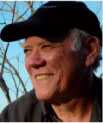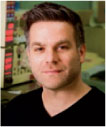New Year Editorial 2014
Curt WentrupEditor-in-Chief, Australian Journal of Chemistry, School of Chemistry and Molecular Biosciences, The University of Queensland, Brisbane, Qld 4072, Australia. Email: wentrup@uq.edu.au

Curt Wentrup was educated at the University of Copenhagen (Cand. Scient. 1966; D.Sc. 1976) and the Australian National University (Ph.D. 1969). After post-doctoral periods with Hans Dahn (Lausanne), W. M. Jones (Gainesville, FL), and Maitland Jones, Jr (Princeton), he held an assistant professorship at the Université de Lausanne, Switzerland, and a professorship at the Universität Marburg, Germany, before returning to Australia in 1985 as Professor and chair of organic chemistry and head of the organic chemistry section at the University of Queensland, where he is now Emeritus Professor. Since 2008, he has been the editor-in-chief of the Australian Journal of Chemistry, and since 2009 chair (now immediate-past chair) of the National Committee for Chemistry of the Australian Academy of Science. He is a Fellow of the Australian Academy of Science and has published over 300 research papers. His interests are in the fields of both experimental and computational chemistry of reactive intermediates and unusual molecules using photochemistry, flash vacuum thermolysis, and microwave-induced chemical reactions; in particular, chemistry of nitrenes, carbenes, nitrile ylides, and nitrile imines, pericyclic rearrangements of cyanates, isocyanates, thio- and isothiocyanates, and nitrile oxides and sulfides, and the chemistry of extended cumulenes. He collaborates extensively with groups in Australia and Europe, and frequently holds visiting professorships in Europe. |

Dr Anastasios (Tash) Polyzos was awarded his Ph.D. in physical organic chemistry in 2005 by La Trobe University and appointed as Research Fellow at CSIRO in the same year. In 2008, he pursued post-doctoral research studies at the University of Cambridge under the guidance of Professor Steven V. Ley, FRS, investigating the synthesis of complex targets using multi-step flow chemistry methods. He is currently a Senior Research Scientist at CSIRO. His research interests include the development of new methods and enabling technologies for organic synthesis, catalysis, reaction discovery, and the development of sustainable industrial process chemistry. Tash has been appointed to the positions of Honorary Research Fellow at La Trobe University, Senior Member at Robinson College, Cambridge, UK, and Honorary Fellow at the University of Melbourne. |

Charlotte Conn obtained B.A. and M.Sc. degrees in natural sciences from the University of Cambridge (2002), and a Ph.D. in 2007 from Imperial College, London, for research in biophysical chemistry. She joined CSIRO in 2006 as a post-doctoral research fellow and is currently a Research Scientist at CSIRO. Her research interests focus on the high-throughput design and structural characterization of new lipidic materials, and the application of these materials in membrane protein crystallization and drug delivery, and as MRI contrast agents. She has extensive experience in the use of synchrotron small-angle X-ray scattering (SAXS), and is a current member of the SAXS Proposal Advisory Committee for the Australian Synchrotron. |
Australian Journal of Chemistry 67(1) 1-2 https://doi.org/10.1071/CH13677
Published: 6 January 2014
2013 was another successful year of publishing for the Australian Journal of Chemistry, with some 1500 pages published in 12 issues. The largest numbers of submissions were from Asia (~350), Australasia (110), Europe (65), and the Americas (30).CSIRO Publishing is embarking on a policy of expanding its journals, which means that Aust. J. Chem., too, can grow. We will however, maintain our high rejection rate (~65 %) and high reviewing and editorial standards. I am pleased to acknowledge that several authors have commented very favourably on the high quality and high level of efficiency of our talented reviewers, who perform a most important and highly valued service for the Journal. It is also pleasing to note that the average time from submission to first decision has fallen to 18 days (this includes immediate rejections), and that Online Early publication has reduced the average time from acceptance to publication to 42 days.
During the year, we published Research Fronts in the relatively new and rapidly growing area of Flow Chemistry, Free Radicals (based on the Beckwith Symposium at the ACS meeting in Philadelphia), Coordination Polymers (also known as organometallic frameworks, a very popular and rapidly growing subject), Proteomics and Mass Spectrometry, Synthetic Organic Chemistry, Materials Chemistry (from the 3rd M3@Singapore conference), Main Group (inorganic) Chemistry, and Fragment-Based Drug Discovery.
The Journal is fortunate that several scientists have volunteered to create Research Fronts with themes close to their hearts. They therefore become Guest Editors for those specific issues, and sometimes they like the work so much that they become Associate Editors for the Journal. Thus, in 2013, Anastasios (Tash) Polyzos (CSIRO, Clayton, Vic.) guest-edited the Flow Chemistry Research Front; C. J. Sumby (University of Adelaide) the Coordination Polymers Research Front; Costel C. Darie (Clarkson University, New York State, USA) the Proteomics and Mass Spectrometry Research Front; David Lupton (Monash University) the Synthetic Organic Chemistry (SynthCon2) Research Front; Cameron Jones (Monash University) and George Koutsantonis (UWA) the Main Group Chemistry Research Front; and Raymond Norton (Monash Institute of Pharmaceutical Sciences) the Fragment-Based Drug Discovery Research Front.
A novelty in 2013 was the inauguration of the Beckwith Review Series with the first such review published by N. J. Green and Mick S. Sherburn (ANU). These reviews are freely available on the Journal’s website.
Aust. J. Chem. reached an agreement with the RACI as well, whereby one highlighted paper from the Journal is published and made freely available to members on the RACI website each month.
Another novelty was the introduction of a commenting tool, which allows readers to post comments directly online to authors of papers published in the Journal. For the time being, this tool will only be available for the first six months after publication.
As can be gleaned from the above, researchers are welcome to suggest new Research Fronts in all areas of chemistry, in particular emerging and/or topical fields. Plans for 2014 include Research Fronts based on the newly formed Sino-Australian Polymer Mission (Guest Editors: Meifang Zhu, Donghua University, China, and Greg G. Qiao, University of Melbourne); the Australasian Polymer Symposium (Guest Editor: Martina Stenzel, UNSW); the 6th Heron Island Conference on Reactive Intermediates and Unusual Molecules; a Dedication to Roger F. C. Brown of flash pyrolysis fame (formerly of Monash University, deceased 2 September 2013); Guanidine Chemistry (Guest Editors: Martyn Coles, Wellington, New Zealand; Roberto Berlinck, Sao Paolo, Brazil; and Choon Hong Tan, Singapore); Modern Fluorine Chemistry (Guest Editor: Luke Hunter, UNSW); X-Ray Crystallography (Guest Editors: Bostjan Kobe, UQ, and Stuart Batten, Monash University); the 4th Singapore Molecular Materials Meeting; and a collection of papers by RACI prize winners.
I am pleased to welcome two new Associate Editors, namely Dr Tash Polyzos and Dr Charlotte Conn, both at CSIRO Materials Science and Engineering, Clayton, Vic. (see below).
I extend my best wishes to you, the readers, for a happy, successful, and enjoyable New Year, and in particular I thank the authors, the reviewers, the editors, and the CSIRO publishing staff for making it possible for us to publish high quality papers in diverse fields of chemical science. I am confident this will continue in 2014.


